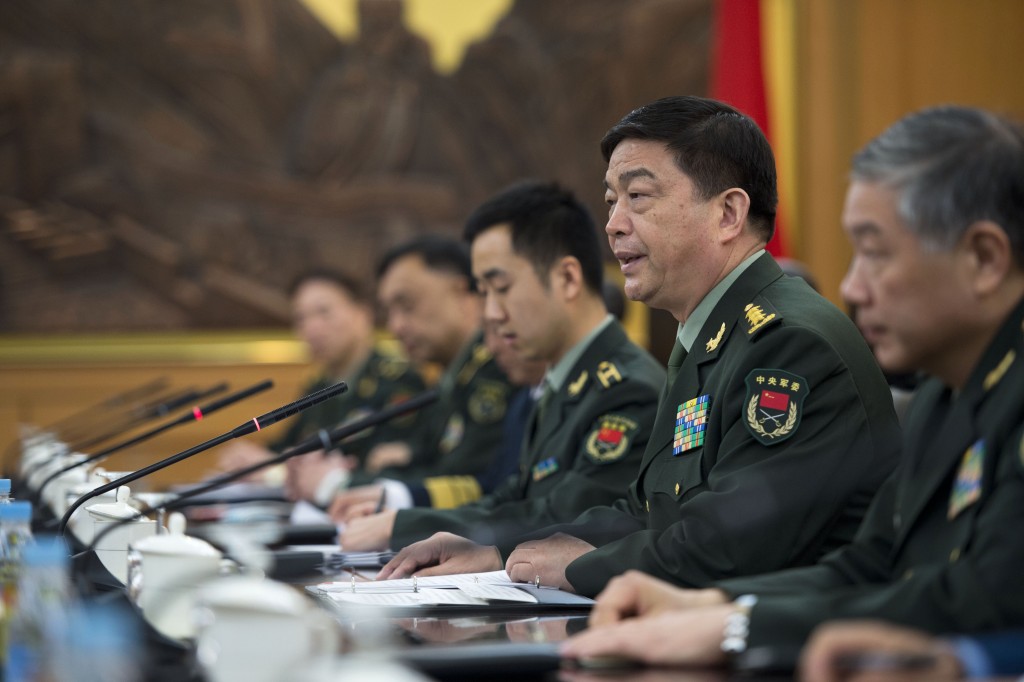
The People’s Liberation Army’s military modernisation programs are often criticised for their lack of transparency, with commentators citing an increased risk of regional insecurity as capabilities expand in the shadows. But in China’s perspective, transparency doesn’t automatically drive strategic stability. Transparency can display strength if you have it, or expose weakness if you don’t. For rising powers like China, displaying cards that show a weakish—albeit strengthening—hand could invite adverse responses from strong states. A stronger player may want to undermine the PLA and hinder its effectiveness, if it judged its own future security was threatened.
So transparency represents a dilemma for China’s security planners: they want—perhaps begrudgingly—to show enough of their growing capabilities to limit suspicion and hardening attitudes against them, but not so much that they would risk revealing their vulnerabilities.
In recent months, the PLA has attempted to resolve that contradiction. At the end of the RIMPAC exercises, Zhao Xiaogang, drill director of the Chinese fleet said ‘the Navy has shown an image full of openness and confidence and deepened mutual understanding between countries’. At the Ministry of National Defence, the monthly press conference was open for the first time to foreign journalists. In April, the US Secretary of Defense Chuck Hagel was granted his request to step onto the flight deck of the PLAN Liaoning. And, at the anniversary of the founding of the PLA in early August, China’s military schools were opened to international media for the first time.
At face value, there’s a genuine effort to show off China’s military. But at the same time, as one commentator suggested, ‘if the PLA is serious about transparency, it will have to do more than allow Chuck Hagel to tour its symbolic aircraft carrier.’ These attempts reflect China’s dilemma: how do you display an attitude of transparency, without actual transparency? And, importantly, how do you avoid perceptions that you are feigning transparency in lieu of real openness?
There’s much China refuses to discuss, such as its disruptive technologies like nuclear missiles and cyber. In those areas, the PLA’s programs remain a black box. Gregory Kulacki at the Union of Concerned Scientists explains that China’s refusal to discuss the size and capabilities of its nuclear forces is due to the US pursuit of a missile shield, as that ‘undermines Chinese confidence in US assurances that greater Chinese transparency would not undermine Chinese security’. In cyber, the Obama administration held an extraordinary briefing for the Chinese military leadership in April on the Pentagon’s emerging cyber doctrine. China didn’t reciprocate, despite an expectation on the part of the US that it would do so.
China believes that transparency benefits stronger powers and undermines its own policy of deterrence. Therefore it judges that greater transparency isn’t necessarily in its interest. And that means the PLA is likely to continue only token efforts of transparency until it perceives that it gains more from actual transparency. Arguably, that trend may have already begun. Benjamin Schreer has argued that a shift is already underway and ‘strategic ambiguity’ in China’s regional strategy is looking increasingly obsolete. Part of China’s coercion, says Schreer, is to display its power. In China, Yang Xiyu, a senior researcher with the China Institute of International Studies recently spoke on the Chinese program ‘Key Insights’ about increased PLA transparency and China’s emerging strategic self-confidence.
Importantly, the PLA’s symbolic efforts at transparency are not necessarily discouraging. China wants a favourable, open international image without prejudice to its defence posture. There’s a middle ground between revealing capabilities that show weakness, and revealing nothing and thereby implying a more worrying posture. The PLA’s behaviour in recent months suggest it is willing to find compromises and that’s a good sign. Perhaps China’s coming to the conclusion that it benefits from being more open about its capabilities. If so, that trend would help regional defence planners adapt with more certainty.
In the short term, the region should expect more from China. China’s strong military power make a transparent approach more appropriate. And there has been a pattern in China’s current leadership that appears to show increased accountability. President Xi Jinping is at the forefront of an anti-graft campaign within the PLA—and China writ large—and has shown he is keen to macro-manage the military, using the National Security Commission, the Central Military Commission (a position China’s leaders naturally assume), and the new leading group for deepening reform on national defence and the military.
Minister for Defence David Johnston pointed out at the Shangri-La Dialogue that transparency is key to promoting regional peace and security. And while most states would ostensibly share that sentiment, the picture is incomplete. Transparency can work against rising powers, even as it works in favour of their neighbours and of stronger powers. China is playing its cards close to its chest. But Beijing also understands that its military growth concerns others, and that it can sometimes gain more from being more open.
Simon Hansen is a research intern in ASPI’s International Cyber Policy Centre. Image courtesy of US Department of Defense.

